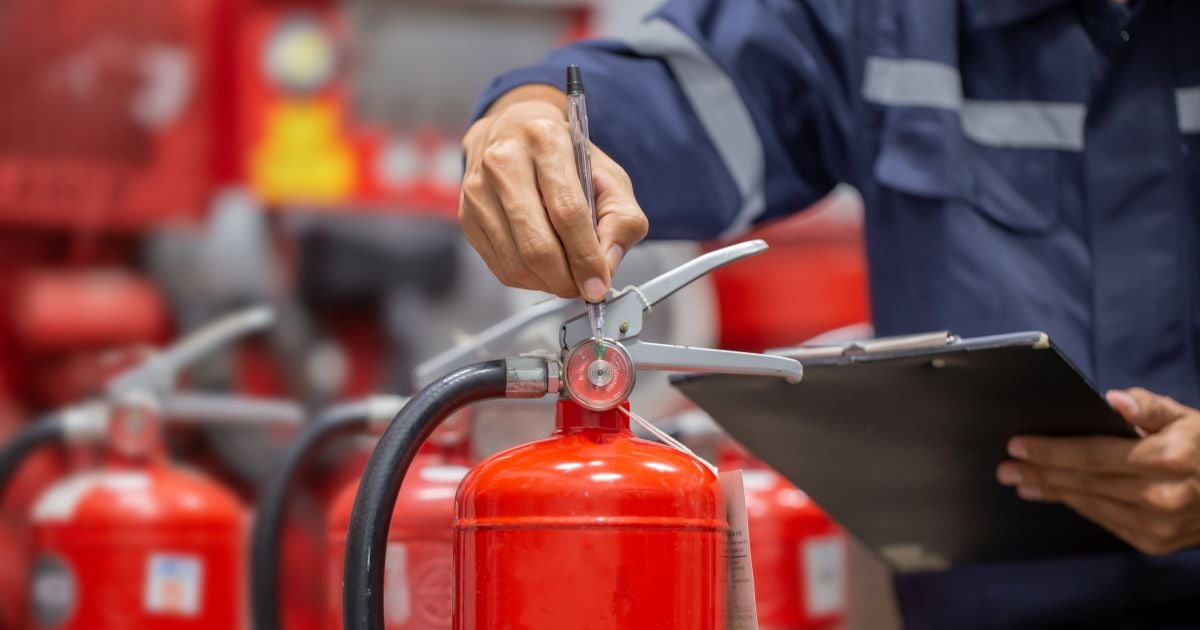Protection against fire is a must for any Sydney business. It’s not just an obligation under the law, but it’s also a method of keeping personnel, customers, and even property protected. A fire can cause devastating losses in minutes, but most of these risks can be minimized or eliminated with the proper safety measures in place. Inspections for fires, as well as regular tests of electrical systems and conformity with CFSP standards all help in creating a safe and secure environment.
The importance of fire inspections to safety
Inspections for fires are the initial defense against possible hazards. These inspections make sure that all the components of the building’s fire-protection system are in good working order and up-to-date. In Sydney many businesses, they must conduct inspections every six or twelve months, depending on kind of building and council regulations. Inspections may cover everything from sprinkler and fire alarm systems, to smoke detectors, hydrants, and extinguishers.

The ability to identify the hidden problems and rectify them before they cause danger is what makes inspections important. A minor flaw on a fire hydrant or a smoke detector that is blocked may seem insignificant at first glance but in a situation of emergency, such faults can cause death. Business owners who check regularly their fire hydrants are meeting their legal obligations and also taking precautions against unexpected disasters.
Test and Tag Examine Hidden Electric Risks
Electrical systems are a major cause of fires in the workplace. Testing and tagging are therefore an important part of a plan to ensure fire safety. This involves checking electrical equipment for safety, function and conformity, before attaching a tag to indicate that the equipment was inspected. This is not just an essential requirement for a lot of businesses. It’s also a way to protect from hidden risks.
Incorrect appliances, old wiring, or worn-out cables can be a fire hazard if left unchecked. Businesses can reduce the risk of fires by testing regularly and tagging electrical equipment. This also creates trust and confidence in employees, as they are assured that their work environment is secure. When combined with testing, fire inspections, and tagging provides a complete safety program that reduces risks on many fronts.
The function of CFSP is to ensure compliance and certification
In New South Wales only a Competent Fire Safety Practitioner (CFSP) is able to certify or sign crucial documents regarding fire safety, such as the annual declarations of fire safety. The introduction of CFSP certification has raised the standards for fire safety by ensuring that only experts are qualified to evaluate and verify safety. For business owners working with the CFSP, inspections and reports won’t be just a routine piece of paperwork but an accurate evaluation performed by experts.
The role of a CFSP extends far beyond ticking boxes. These professionals provide detailed reports and confirm compliance to rules and regulations. Without CFSP certification, businesses could face costs, legal issues and even shutdowns if fire protection measures are deemed insufficient. Utilizing experts accredited by CFSP ensures the fire safety system is in place properly, and that the requirements for compliance are met.
Fire Safety is a Continuous Engagement
The issue of fire safety is not just a one-time responsibility, but it is a continuous responsibility for each business owner. Regular inspections and testing of electrical equipment with proper certification through CFSP and CFSP, create a security cycle that never ends. This method is not just legally enforceable, but it creates a safer environment in the workplace. Employees feel secure knowing that evacuation plans clearly laid out are in place, smoke alarms are functional and emergency lighting is tested, and fire suppression systems are fully functional.
If you treat fire safety as an ongoing process, not just a checkbox to check every year companies can lower risks and also enhance their image. If safety is a priority, clients and customers are assured of their safety. In the long term investing in proactive fire protection can save the company money by preventing costly damages and fines or legal fights, while protecting the lives of those that enters the building.
Conclusion
Sydney security for fires requires a multilayered approach, which includes fire inspections and testing as well as tagging and certification through an CFSP. Each of these elements contributes to assisting businesses to comply with regulations, but more importantly in protecting people and property. Businesses that make safety the top priority in their work and not just a side note will comply with their legal obligations as well as create a more stable, safe and secure environment.